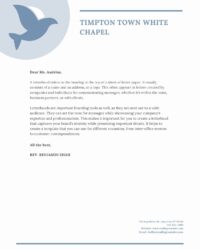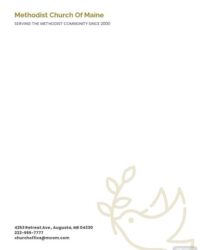Utilizing such a form streamlines the administrative tasks associated with membership integration. It also ensures equitable consideration of all applicants and provides a valuable resource for tracking congregational growth and demographics. A well-designed form can additionally serve as an introductory tool, communicating essential information about the church’s values, mission, and expectations to potential members.
This article will further explore the key components of effective forms, offering guidance on development, implementation, and utilization within a religious community context. Specific examples and best practices will be highlighted to assist churches in creating a welcoming and efficient membership process.
Key Components of a Membership Application Form
Effective applications balance gathering essential information with creating a welcoming experience for prospective members. The following components contribute to a well-rounded and functional document:
1. Personal Information: This section collects basic identifying data, including full legal name, date of birth, address, phone number, and email address. Accurate contact information is crucial for communication and record-keeping.
2. Spiritual Background: Inquiries regarding prior religious affiliations, baptism status, and spiritual journey provide insight into an individual’s faith background and current beliefs. This information can help facilitate integration into the new community.
3. Reasons for Joining: Understanding an individual’s motivation for seeking membership offers valuable insights into their expectations and how the church can best serve their spiritual needs. Open-ended questions encourage thoughtful responses.
4. Statement of Faith: A brief affirmation of agreement with the church’s core doctrines and beliefs ensures alignment with the community’s theological foundation. This component reinforces shared values and provides clarity regarding doctrinal positions.
5. Commitment to Involvement: Exploring areas of interest within the church, such as volunteering, small groups, or ministry participation, helps connect new members with opportunities for engagement and service.
6. Emergency Contact Information: Collecting the name and contact details of an individual to be notified in case of emergency provides a crucial safety net and demonstrates pastoral care.
7. Signature and Date: Formalizing the application with a signature and date signifies the applicant’s understanding and agreement with the information provided and their intention to pursue membership.
A thoughtfully constructed application serves as a valuable tool for both the prospective member and the church. It facilitates a smooth transition into the community while offering important insights for fostering spiritual growth and meaningful engagement.
How to Create a Church Member Application Form
Developing a well-structured application form requires careful consideration of various factors to ensure effectiveness and clarity. The following steps offer guidance for creating a comprehensive and user-friendly document.
1. Define Objectives: Clearly outline the information required from prospective members. Determine which data points are essential for understanding their background, spiritual journey, and commitment to the church community.
2. Structure and Format: Organize the form logically, grouping related information together. Utilize clear headings, subheadings, and concise instructions to facilitate easy navigation and completion.
3. Content Development: Craft specific questions designed to elicit relevant information. Employ a balance of open-ended questions, encouraging detailed responses, and structured fields for factual details.
4. Accessibility Considerations: Ensure the form is accessible to individuals with varying needs. Provide options for completing the form digitally or in print. Use clear fonts and formatting for readability.
5. Legal and Privacy Compliance: Adhere to relevant data privacy regulations. Include a clear statement regarding the collection, use, and storage of personal information provided in the application.
6. Review and Revision: Subject the draft form to thorough review by key stakeholders, including church leadership and administrative staff. Solicit feedback to identify areas for improvement and refinement.
7. Implementation and Distribution: Establish clear procedures for distributing and collecting completed applications. Communicate these procedures effectively to prospective members and relevant church personnel.
8. Regular Evaluation: Periodically review and update the application form to ensure continued relevance and effectiveness. Consider evolving needs and incorporate feedback received from applicants and staff.
A well-designed application form serves as a crucial tool for facilitating membership integration and fostering a welcoming environment within the church community. Consistent implementation and ongoing evaluation ensure continued effectiveness and alignment with the church’s mission and values.
Standardized forms for prospective members offer a structured approach to gathering essential information, facilitating a smooth and efficient onboarding process. A well-designed form ensures consistency, promotes equitable consideration, and provides valuable data for tracking congregational growth. Key components include personal details, spiritual background, reasons for joining, and a statement of faith. Careful consideration of accessibility, legal compliance, and ongoing evaluation contribute to a form’s long-term effectiveness.
Effective implementation of these principles strengthens a church’s administrative processes and fosters a welcoming environment for those seeking to join the community. This structured approach supports both the individual’s integration and the church’s overall mission by ensuring a clear and consistent pathway to membership. Continued refinement and adaptation of these practices will further enhance the ability of religious institutions to connect with and serve their communities effectively.


